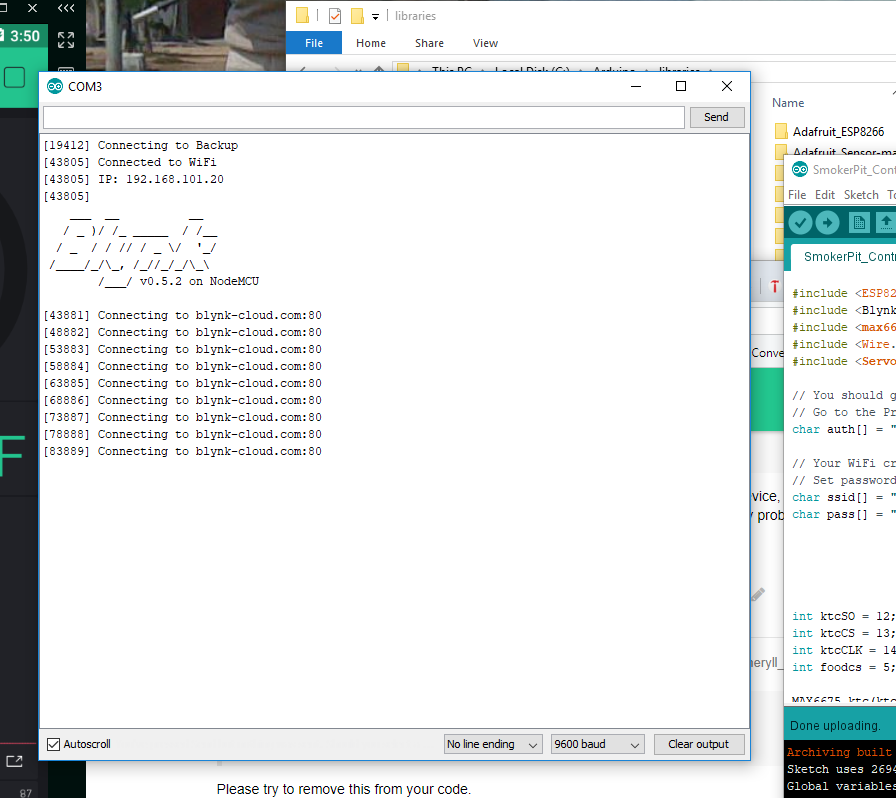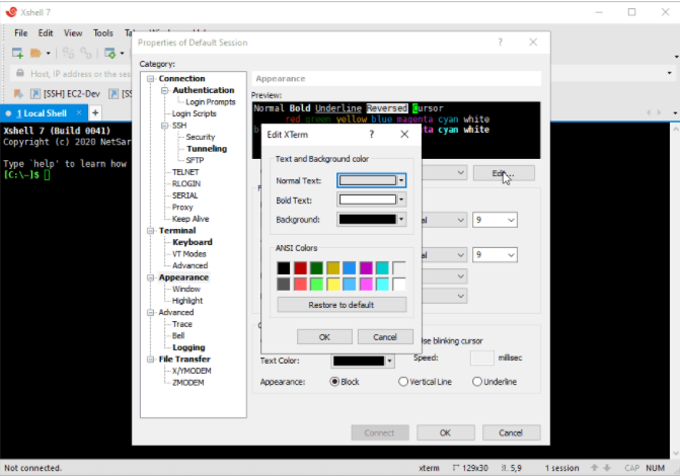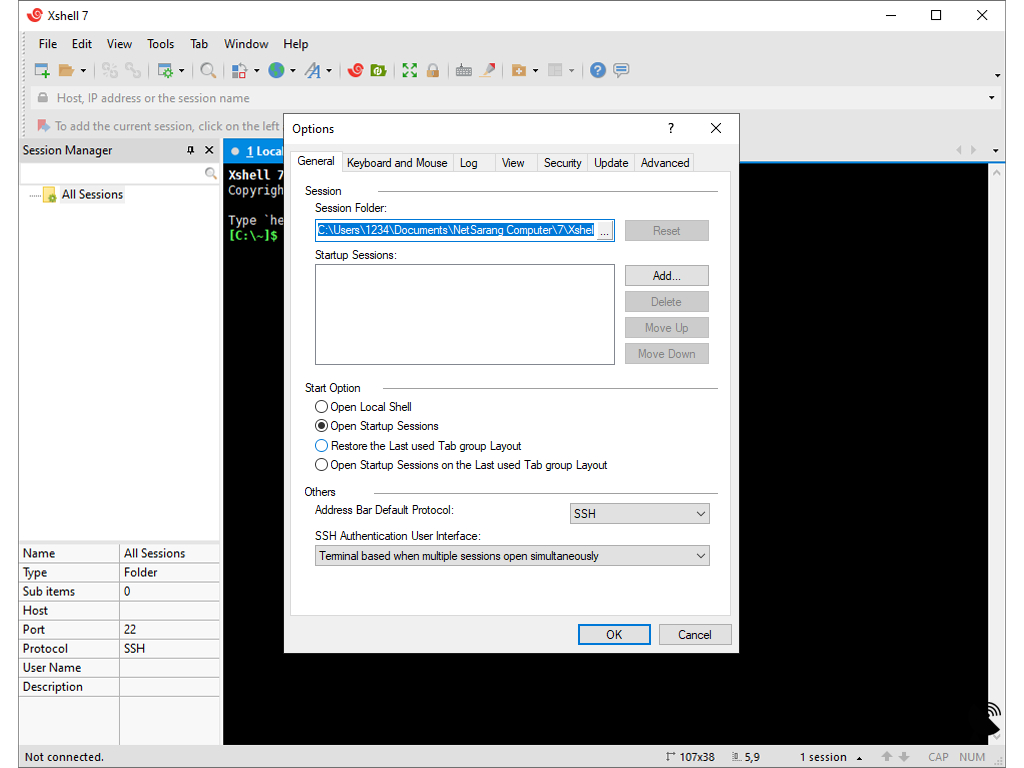SSH IoT Devices Examples - Secure Connections
It feels like everything these days is connected to the internet, doesn't it? From the little gadgets in our homes that help us wake up or keep our food cool, to the bigger machines that make things in factories, all these smart devices are constantly chatting with each other. This whole web of connected things, often called the internet of things, or IoT for short, is growing bigger all the time. With so many bits of equipment talking to each other from far away, keeping them safe and being able to check on them without actually being there becomes, you know, a very big deal.
Just think about it for a second. Wouldn't it be great to fix a smart heating system or peek at what a sensor is picking up, all without needing to drive out to where the gadget actually lives? This is where a clever tool called SSH, which stands for Secure Shell, really comes into its own. It's like having a secret, safe doorway straight into your device, no matter where you are. So, we're going to explore some actual SSH IoT devices examples, see how they get used, and understand how this way of doing things helps keep the whole connected world both safe and running smoothly.
Whether you're someone who builds these smart gadgets, a person who looks after computer systems, or just someone curious about how all this cool tech works, knowing about SSH and IoT is pretty helpful. Being able to connect to your IoT devices from a distance using SSH is, well, it's a perfect way to keep an eye on them and manage them safely. We'll walk through how you can set up these connections pretty easily, actually, so you can see some real SSH IoT devices examples in action.
Table of Contents
- What is SSH and Why Does It Matter for Connected Things?
- How Does SSH Help Manage Smart Gadgets - SSH IoT Devices Examples?
- Real-World Uses - SSH IoT Devices Examples in Action
- Keeping an Eye on Your Home with SSH IoT Devices Examples
- Big Business and SSH IoT Devices Examples
- Keeping Your Connected Gear Safe - How SSH Helps
- What are Some Common SSH IoT Device Examples for Safe Access?
- Getting Started with SSH for Your Connected Gear
What is SSH and Why Does It Matter for Connected Things?
SSH, or Secure Shell, is a way for one computer to talk to another over a network in a very private way. Think of it like sending a message in a sealed, tamper-proof envelope, where only the person it's for can open and read it. This kind of safe talking is, you know, super important when you're dealing with devices that are out there in the real world, maybe even in places you can't easily get to. It means you can send instructions or get information without worrying about someone else listening in or changing things.
For the world of connected things, SSH really does play a big part in many different ways these gadgets get used. It lets people get into devices from far away, look after them, and helps them talk to the bigger systems that control everything. It acts like a very important link, connecting small bits of equipment, bigger machines, and even whole industries, making sure everything communicates in a safe way and works together smoothly. So, it's pretty much the backbone for a lot of these far-off connections, actually.
How Does SSH Help Manage Smart Gadgets - SSH IoT Devices Examples?
When you have a smart gadget, whether it's a little sensor or a complex machine, you often need to check on it, change its settings, or even fix it if something goes wrong. Doing this in person every time would be a real pain, so, you know, that's where SSH steps in. It gives you a way to open up a command line on that device, just as if you were sitting right in front of it, but you could be hundreds of miles away. This means you can update software, check system logs, or restart a service without ever leaving your desk. It's a pretty handy trick for managing lots of devices.
Consider a smart home system, for example. If your smart lights suddenly aren't responding, you might use SSH to connect to the central hub and see what's happening. Or, if you have a weather station running on a small computer like a Raspberry Pi in your garden, you could use SSH to get the latest readings or tweak the way it collects data. These are just a couple of simple SSH IoT devices examples where being able to reach out and touch the device virtually makes a big difference. It's about having that control, pretty much, from wherever you happen to be.
Real-World Uses - SSH IoT Devices Examples in Action
The idea of using SSH with connected devices isn't just for tech experts; it has a lot of practical uses that touch our daily lives and even big businesses. It's about making things work better and safer, which is something we all appreciate. So, let's look at some places where you might find SSH doing its job, making our gadgets and systems more manageable. You know, it's pretty neat how widely it gets used.
From keeping an eye on your home to managing large-scale industrial setups, SSH provides a dependable way to interact with distant equipment. It's the silent helper that ensures everything runs as it should, giving you peace of mind that your smart things are doing their job and staying safe. Basically, it's a foundational piece of the puzzle for a truly connected world, and it's pretty much everywhere you look, even if you don't realize it.
Keeping an Eye on Your Home with SSH IoT Devices Examples
In your home, you might have smart thermostats, security cameras, or even clever light bulbs. These devices often have little computers inside them. If you're away on holiday and your smart camera stops sending pictures, or your thermostat isn't responding, you can use SSH to check on it. You could log in, see if the camera's software needs a little nudge, or check the thermostat's settings. This saves you a trip home and gives you a feeling of control, which is really nice to have. It's a very practical way to keep things running smoothly, you know, even when you're not there.
Another common setup for home users involves small, single-board computers like Raspberry Pis. People often use these for home automation projects, like controlling sprinklers, monitoring air quality, or running media servers. If you need to update the software on your sprinkler controller or check the data from your air quality sensor, you can just SSH into the Raspberry Pi from your laptop, wherever you are. This kind of direct access is a super helpful part of these home-based SSH IoT devices examples, giving you a lot of flexibility and power over your personal tech. It just makes things easier, honestly.
Big Business and SSH IoT Devices Examples
Now, think about bigger places, like factories or farms. They have many sensors and machines spread out over large areas. Imagine a sensor in a faraway field that measures soil moisture for crops, or a temperature sensor inside a huge industrial freezer. If one of these stops working, or needs its settings changed, sending someone out there every time would be costly and slow. This is where SSH truly shines in a business setting. You can connect to these remote sensors and machines, check their status, and make adjustments from a central office. It keeps things moving and prevents big problems, which is pretty important for a business, actually.
For example, in a manufacturing plant, there might be dozens of machines with embedded computers that report on their performance. If a specific machine starts showing unusual readings, an engineer can use SSH to log into its control system, pull up diagnostic logs, or even run tests, all without stepping onto the factory floor. This kind of remote troubleshooting and maintenance is a fundamental part of industrial SSH IoT devices examples. It helps businesses save time and money, and keeps production lines running smoothly, so, it's a big deal.
Keeping Your Connected Gear Safe - How SSH Helps
The more things we connect to the internet, the more ways there are for unwanted visitors to try and get in. Keeping our smart gadgets safe from prying eyes or bad actors is, well, it's a really big concern. SSH was built with safety in mind from the very start. It uses clever ways to scramble the information you send and receive, making it very hard for anyone else to understand. This means your commands and data stay private, and your devices are protected from people who shouldn't have access. It's about building a strong wall around your connected things, you know, a pretty good one.
Without something like SSH, managing these devices from afar would be much riskier. Your passwords could be stolen, or someone could take control of your smart home or industrial equipment. SSH helps prevent these kinds of scary situations by creating a secure channel for all communication. It's a critical piece of the puzzle for building a reliable and safe network of connected devices, which is something everyone wants. Basically, it's your bodyguard for remote connections.
What are Some Common SSH IoT Device Examples for Safe Access?
When we talk about using SSH for safe access, we're thinking about scenarios where you need to get into a device without worrying about who might be listening. One very common example is a smart security camera system. If you have a camera set up at your vacation home, you might want to log in to it to adjust its motion detection settings or check its recording schedule. Using SSH ensures that your login details and the commands you send are private, so, no one else can snoop on what you're doing. It's a pretty straightforward way to keep your home safe.
Another good example involves remote environmental sensors, like those used in agriculture or for monitoring air quality in distant locations. These sensors might be in places with limited physical access. If you need to retrieve data logs or update the sensor's software, SSH provides a secure way to do this. You can pull the information directly from the device without having to worry about the data being intercepted. These are just a couple of the many SSH IoT devices examples where safe access is a must-have, and SSH delivers that peace of mind, pretty much, every time.
Getting Started with SSH for Your Connected Gear
If you're feeling curious and want to try connecting to your own smart gadgets using SSH, it's actually not as tricky as it might sound. Many small computers that are popular for IoT projects, like the Raspberry Pi or similar single-board computers, come ready to use with SSH. You'll usually need to enable SSH on the device first, which is often a simple setting change or a quick command. Once that's done, you can use a simple program on your regular computer to connect to your smart gadget. It's a very satisfying feeling to be able to control something from afar, you know, just with a few typed words.
To make a connection, you'll need the network address of your smart device and its username and password. Then, from your computer's command line or a special SSH program, you just type a simple command. This opens up that secure channel we talked about earlier, and you're ready to send instructions or check things. Learning a few basic SSH commands is pretty helpful for looking after your devices. This whole process gives you a complete picture of SSH and how it's used with connected things, making you feel more capable of managing your gadgets safely and efficiently. It's quite empowering, to be honest.
This article has gone over how SSH plays a really important part in keeping the internet of things safe. We looked at how it helps you manage devices from far away, from the gadgets in your house to the machines in big businesses. We also saw how it makes sure your information stays private and your devices are protected from bad things happening. By understanding how SSH works and seeing some real SSH IoT devices examples, you can feel more confident about connecting your own smart things and keeping them secure.

Can't connect to blynk-cloud.com:80 - Solved - Blynk Community

Download XShell 8.0.0063 for Windows - Filehippo.com

Download Xshell for Windows 11, 10, 7, 8/8.1 (64 bit/32 bit)